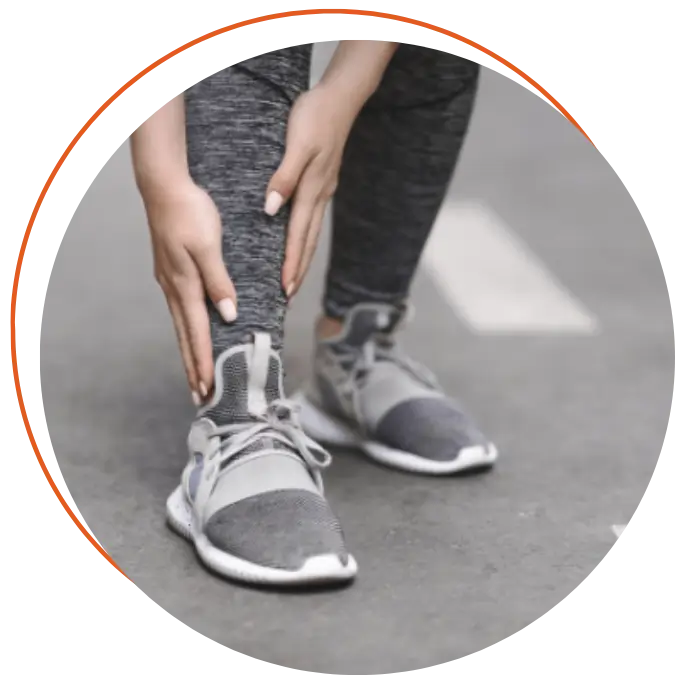What Are Shin Splints?
Shin splints is the term given to pain along the inner edge of the shinbone (also known as your tibia), which is the large bone in the lower leg. This pain happens because of inflammation of the muscles, tendons, and bone tissue in the surrounding area.
Unfortunately, shin splints can happen to pretty much anyone – but they are typically associated with repetitive stress on the lower leg. Think of activities like running and jumping. It’s also particularly common for participants in activities that involve sudden stops and starts.
What Are The Symptoms of Shin Splints?
The symptoms of shin splints can vary in intensity depending on the severity of your condition, but typically include:
Pain: Persistent or throbbing pain along the inner edge of the shinbone, particularly during or after physical activity, is a primary symptom of shin splints. The pain may subside with rest but return when activity is resumed.
Tenderness: The affected area may be tender to the touch, with localized swelling or inflammation.
Muscle Tightness: Tightness or stiffness in the muscles of the lower leg, particularly the calf muscles, may accompany shin splints.
Pain at Rest: In severe cases, you may experience discomfort even when at rest, particularly if the condition is left untreated or exacerbated by continued activity.
Increased Pain with Activity: Pain may intensify with activities that place stress on the lower legs, such as running, jumping, or walking on hard surfaces.
What Are My Treatment Options for Shin Splints?
Managing shin splints involves a combination of rest, self-care measures, and targeted interventions to alleviate pain and promote healing. But unfortunately, shin splints are often chronic – and may require further treatment. Below are some of the treatments that may be prescribed for chronic shin splints.
Stretching and Strengthening Programs: Gentle stretching exercises for the calf muscles and strengthening exercises for the lower leg muscles can help improve flexibility and stability. This should be done under the care of a professional, to ensure you don’t worsen the condition.
Chiropractic Manipulation: A chiropractic adjustment can help with spinal alignment to avoid further injury, and prevent unnecessary pressure on your tibia.
Soft Tissue Mobilization & Medical Massage: Manual massage loosens tight tissues and breaks up scar tissue around your tibia, helping to ease the pain.
NSAIDs: Over-the-counter nonsteroidal anti-inflammatory drugs (NSAIDs) such as ibuprofen or naproxen can help alleviate pain and reduce inflammation.
Frequently Asked Questions About Shin Splints
What can be mistaken for shin splints?
Sometimes chronic exertional compartment syndrome is mistaken for shin splints, a more common cause of leg pain in young people who do a lot of vigorous weight-bearing activity, such as running. If you think you have shin splints and the pain doesn’t get better with self-care, talk to your doctor.
What will happen if I call PPI?
Our team is on hand to help – we can get you scheduled for a consult as soon as the same week.




